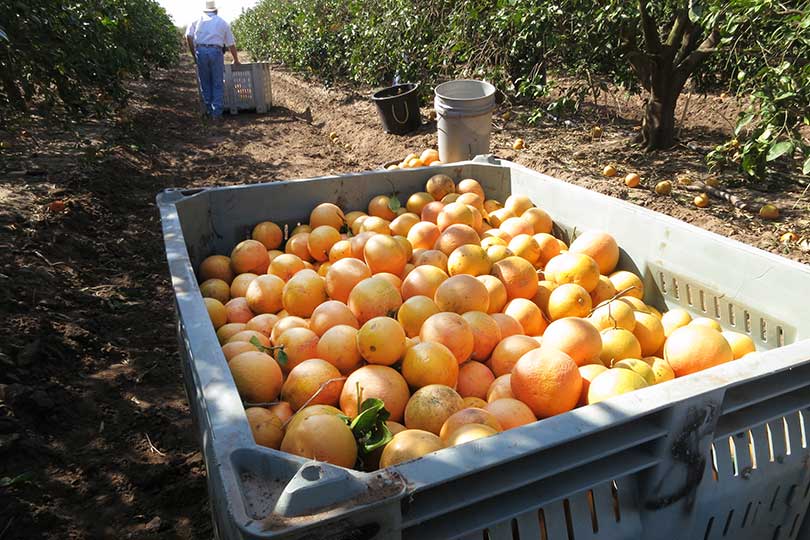By Shala Watson
Staff Writer
Texas citrus growers are grappling with serious threats to their livelihood. That’s why Rio Grande Valley growers took action late last month to pass a referendum to take the next step in their ongoing battle against citrus pests and diseases.
The majority of growers strongly supported the effort and the vote passed to establish management zones, approve a maximum assessment rate and elect board members comprised of citrus growers representing a zone.
“Sixty-six percent of those who voted, voted in favor,” Dale Murden, president of Texas Citrus Mutual, told the Texas Farm Bureau Radio Network. “More importantly, 93 percent of the acres voted to form what we call the zone, which is the Lower Rio Grande Valley commercial industry consisting of Cameron, Willacy and Hidalgo counties.”
The Texas Citrus Pest and Disease Management Corporation (TCPDMC), which was established in 2009 by the Texas Legislature, will help provide the tools growers need to combat diseases and pests that threaten the industry by implementing a suppression program, much like the boll weevil eradication program for cotton.
“The Valley growers are really facing a challenge, and I think they recognize that when they voted to form the corporation to try to combat these diseases,” Murden said.
A $125 per acre maximum assessment rate was proposed and passed in the referendum.
“It remains to be seen what the initial assessment rate is going to be,” Murden said. “They will form the board in a few weeks and regroup and look at trying to decide which area to tackle first.”
The corporation will use funds from the assessment to help combat these pests and diseases. This effort will help slow the economic impact these diseases have on Valley growers.
Murden said he thinks the single most important part of the referendum passing is to have 10 citrus growers represent the corporation to suppress the issues at hand.
“Growers electing growers to run their affairs,” Murden said. “Nobody better than a grower knows how important it is to watch costs, keep costs in check while protecting the industry.”
Murden said the board will determine term limits and reelect members every couple of years.
Citrus has a longstanding history in the Lone Star State, and the total value of the industry to the Texas economy is more than $200 million.
The first positive Asian citrus psyllid (ACP) was found in the Rio Grande Valley in 2008. Citrus greening is an incurable citrus tree disease that is spread by ACP. The only form of prevention for this disease is to treat against the pest.
“We are looking very closely at a suppression monitoring program for the Asian citrus psyllid, which is the vector for the greening,” Murden said. “We’ve got our hands full, and we have a real juggling act ahead of us. But we do work hand in hand with the Texas Department of Agriculture [TDA] and the USDA-APHIS [Animal and Plant Health Inspection Service] to try to slow things down a little bit and get us back on the right course.”
The Valley is also dealing with other pest and disease issues like the Mexican Fruit fly and the citrus canker.
Citrus canker is a highly contagious bacterial disease that causes lesions on the leaves, stems and fruit of citrus trees which affects the health and marketability of the infected fruit. It is spread rapidly by wind-driven rain.
There are two strains of the citrus canker. The “A” strain is lethal and deadly to all citrus trees, according to Murden. This strain has been detected in two orange trees in Houston and nearly 300 citrus nursery trees in Richmond, according to TDA.
“The canker was eradicated down here back in the 1940s, and it’s appeared again,” Murden said. “Now, we understand there is an outbreak of a pretty deadly strain of canker in the Houston area. TDA and APHIS are working very hard to control it in that area and we definitely do not want to see it in the Valley.”
The Wellington or “W” strain of the citrus canker, which is limited to lime and lemon trees, was detected in Brownsville last year.
Valley growers are also under quarantines for the Mexican Fruit fly, which was eradicated in 2012 but has jumped up again, Murden noted.
“We’ve got three different quarantines with three distinctly different issues,” Murden said.
There wil

